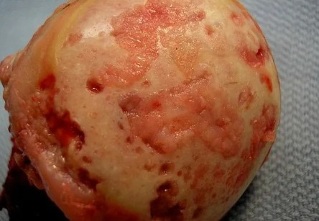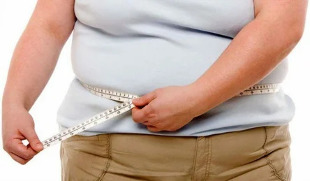Osteoarthritis — a chronic pathology that affects the connective tissue patterns of the musculoskeletal system. For disease is characterised by a gradual period of time with the gradual destruction of cartilage tissue. Osteoarthritis has been found in the majority of patients after 65 years, so as one of the reasons for its development becomes a natural aging of the organism.
To the appearance of degenerative-degenerative pathology lead previous injury, endocrine and inflammatory diseases, excessive exercise, or, on the contrary, a sedentary way of life. Initial symptoms of osteoarthritis are pain in the joint, its swelling, limitation in movement.
For diagnosing pathologies are carried out instrumental research — radiography, arthroscopy, MRI, CT. Osteoarthritis of 1 and 2 degree of severity treated conservatively rate the intake of drugs, physiotherapy and massage treatments, exercise therapy. In the irreversible destructive changes in the joints is shown surgery — arthrodesis, joint.
Pathogenetic mechanisms
When osteoarthritis occur expressed changes in the interior of the connective tissue structures. The cartilage tissues are formed by deforming erosion, which becomes the reason of destruction of fibres of collagen and proteoglycans, because it consists of protein (5-10%) and glycosaminoglycans (90-95%). Due to guide collagen mosquito net to lose stability, begin to released metalloproteinases, which destroy all types of proteins of the extracellular matrix. To the destruction of the accelerating increase in the biosynthesis of collagenase and stromelysin. Usually the normal quantitative values of the enzyme controls the cytokines are small peptide information molecules. But when the progression of arthrosis of the concentration of these proteins is reduced, causing the release of large amounts of enzymes that attack the cartilage tissue.

Proteoglycans with a modified structure begin to absorb water molecules, which are not able to maintain. So the excess liquid comes in collagen fibers. They "swell", they lose their firmness and elasticity. In the qualitative and quantitative composition of the synovial fluid there are also negative changes. When osteoarthritis in her decreasing the concentration of hyaluronic acid. To the hyaline cartilage will cease to flow in sufficient for their regeneration amount of nutrients and oxygen. In the cartilage tissue forming foci of softening, and then the cracks appear, specific necrotic growths. Bone head naked, start at microtraumatic in bias in relation to each other.
Causes and precipitating factors
The reasons for the development of primary (idiopathic) osteoarthritis is not yet established. It arises in the absence of any provoking factors, therefore, it is submitted to the theory of hereditary predisposition to premature destruction of the cartilage. Secondary osteoarthritis develops as a consequence of other diseases of the joints or from injuries. What can be the cause of degenerative-degenerative diseases:
- injury to the joint or in the surrounding connective tissue structures — fractures, dislocations, injuries to the meniscus, partial rupture of muscles, ligaments, tendons, or their complete detachment from the bone of the base;
- congenital dysplastic violation of the development of the completion of the joints;
- impaired function of the glands with internal secretion, disorders of metabolic processes;
- rheumatic fever, or rheumatic fever;
- rheumatoid, reactive, metabolic, psoriatic, or gouty arthritis, arthritis;
- festering arthritis, caused by streptococcus, epidermal or golden staphylococci;
- tuberculosis of any localization, brucellosis, chlamydia, gonorrhea, syphilis;
- degenerative-degenerative diseases, for example, dissect Legg.
To the development of osteoarthritis predisposes hypermobility of the joints, drive the production of specific collagen. Such a condition is detected in 10% of the population of the planet and is not considered a pathology. But hypermobility accompanied by weakness of the tendon-ligamentous apparatus, which leads to frequent injuries, the special of the ankle joint (sprains and breakage of the ligaments, sprains).
The cause of osteoarthritis sometimes there are blood disorders, such as hemophilia. Hemarthrosis, or bleeding into the cavity of the completion of the joints, provokes a deterioration of the trophic cartilage and their destruction.
The predisposing factors include older age, frequent load on the joints, in excess of the limits of their resistance, overweight, surgical procedures, hypothermia.

To the group of risk includes women in menopause, people who live in unfavorable ecological environment, or coming into contact with toxic chemical compounds. On lack of in the diet of foods with vitamins and trace elements are prerequisites for the gradual degradation of the hyaline cartilage.
The clinical picture
The danger of arthrosis lies in the absence of symptoms in the first stage of its development. Pathology clinically manifests itself gradually, the first symptoms appear on the background of the significant destruction of the cartilage tissue. Initially, a person feels weak, pain that has a clear localization. It appears after physical exertion — lifting, sports training. Sometimes the first clinical manifestation becomes a crunchy, clicking during flexion or extension of the joint. The person begins to notice that certain movements are given with difficulty. However, in the initial stage of arthrosis stiffness occurs in the morning hours and soon disappears.
With the progression of the disease is pain felt in the night, provoking not only sleep disorders, but also the emergence of chronic fatigue. The severity of the pain syndrome in the second stage increases when the weather changes, exacerbation of chronic disease, SARS. Significantly reduces the volume of movements. The cause of the stiffness becomes thinning of the cartilage, as well as the conscious restriction of a person's movements in an attempt to prevent the occurrence of pain. This leads to an increase in the load on the opposite joint, what causes its further damage. For arthritis are characteristic and other specific symptoms:
- pain provokes spasms of skeletal muscle and development of muscle contractures (limitation of passive movements in the joint);
- crunching in the joints, clicking, crackling sounds while driving are permanent, arise almost every time the bias of the bones to each other;
- often arise from painful muscle spasms;
- deformed joints, which leads to disturbances in posture and gait;
- on the third stage of arthrosis deformation expressed so clearly, that the completion of the joints bent and the range of movements in them significantly reduced or completely missing;
- when osteoarthritis of the third stage of the knee, the ankle, the hip joint of the patient during movement using his stick or crutches.
If left untreated the pathology progresses, and during the remission varies relapses, with the frequency of exacerbations all the time growing up. Stiffness in the movements for the morning, now disappearing for a long period of time, becomes constant.
Examined a patient with articular arthritis suffering from 1 degree, the doctor noted only a small swelling of the joint and the complete preservation of range of motion. In pathology 2 degree of palpation brings pain and weakly significant deformation. In the area of the joint space observed the emergence of bone thickening.
For arthrosis is a typical development of synovitis — inflammatory processes in the synovial membranes of the hip, knee, ankle, shoulder joints. Their main symptom is becoming educated a rounded seal, in completing joints, when the pressure on which is manifested the movement of fluid (fluctuation). Acute during the synovitis may be accompanied by a rise of temperature to 37-38°C, headache, disorder of digestion.
Diagnosis
Diagnosis is established on the basis of the results of instrumental research, the peculiarities of the clinical picture, anamnesis, complaints of patients. The general analysis of blood and urine uninformative — all the values remain in the normal range, if it is osteoarthritis is not activated metabolic pathology. In the development of synovitis increased the erythrocyte sedimentation rate (30 mm/hour), in the blood increases the level of white blood cells, fibrinogen. This suggests that flows in the body acute or chronic inflammatory process. Change of biochemical and immunological indicators occurs in secondary forms of osteoarthritis.
The most informative method of diagnostics of degenerative-degenerative pathology — radiography in direct and side projections.
| Stage of osteoarthritis in accordance with the classification of Kellgren-Lawrence (1957) | Radiological signs of pathology |
| The initial | The lack of x-ray signs of |
| The first | Indistinct, asymmetrical joint space narrowing. A small flattening of the edges of the bone plates, the formation of the initial osteophytes or their lack of |
| The second | Expressed as joint space narrowing greater than the value of the norm in 2-3 times, the education of a large amount of osteophytes, subchondral osteosclerosis. The emergence of kistevidnyj enlightenment in the epiphyses |
| The third | The emergence of significant subchondral osteosklerózya and large marginal osteophytes, significant narrowing of joint space |
| The fourth | Gross massive osteophytes, almost complete fusion of the articular slits, deformation and sealing of the epiphysis of bones forming the joint |
If after studying the x-rays at the doctor's doubts about putting the diagnosis is assigned to CT. And for an assessment of the state located around the joint connective tissue structures is performed by MRI. When using the contrast can be in the dynamics of the assess the blood supply to the tissues, setting the stage of the inflammatory process in the development of synovitis.
The basic methods and therapy
Osteoarthritis is still an incurable disease, because there is no pharmacological agents for the regeneration of cartilage tissue. The main task of the therapy becomes the prevention of the progression of the pathology, the preservation of the motion of the joint. Treatment is long-term, comprehensive, with the use of local and systemic drugs. Patients should avoid serious load on the joint, if necessary, to limit the amount of movements of the orthopaedic tools — on brace, elastic bandages. Patients with overweight it is necessary to make adjustments in your diet for gradual reduction of body weight and follow a diet.
After achieving stable remission, patients are shown the daily activities of physical therapy. The first exercises are held under the guidance of a doctor, exercise therapy, then the patient performed a complex of exercises at home. Physical therapy can be supplemented with swimming, yoga, cycling.
To reduce the severity of the pain syndrome prescription drugs different also clinical-pharmacological groups:
- non-steroidal anti-inflammatory drugs in the form of ointments, tablets, solutions for parenteral administration with active substances;
- injections into the joint solutions of the anesthetics in combination with corticosteroids;
- muscle relaxants to eliminate the muscle spasms and restrictive contractures.
In the treatment regimens included are B vitamins, sedatives, if necessary — of sedatives and antidepressants. I'm sure they are appointed chondroprotectors for a long course of income. This is the only group of drugs that have the ability to partially restore cartilage tissue.
To increase their clinical activities take place physiotherapy — laser, magnetic field, UHF-therapy.
Each pain in the joints, should become a warning signal for immediate treatment to the doctor. Therapy, performed in the initial stage of arthrosis, allow you to stop the destruction of cartilage, avoid loss of functionality and disability.






















